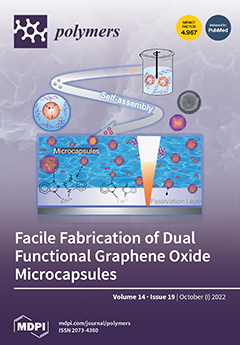The strengthening of timber beams with carbon-fibre-reinforced polymers (CFRP) has been widely used in the last decades to enhance the behaviour of historical or new timber structures, usually for bending. While considerable improvement in capacity and ductility is typically achieved, the increase in
[...] Read more.
The strengthening of timber beams with carbon-fibre-reinforced polymers (CFRP) has been widely used in the last decades to enhance the behaviour of historical or new timber structures, usually for bending. While considerable improvement in capacity and ductility is typically achieved, the increase in stiffness was, in many cases, well short of analytical expectations, which tend to overestimate stiffness. This study addresses the problem by investigating the underlying mechanical behaviour using experimental, analytical, and numerical tools on a sample of Norway spruce (
Picea abies) beams reinforced with carbon-fibre fabric. In the experimental program, each beam is tested for bending with and without CFRP reinforcement in order to determine specimen-specific stiffness increase on an individual basis. The reinforcement yielded an increase of
in capacity,
in ultimate displacement, and
in compliance, verifying its efficiency. Axial compression tests on an independent sample are also performed to verify modulus of elasticity in compression. Numerical computations based on a beam model and a three-dimensional finite element model are performed with the introduction of separate moduli of elasticity for tension and compression in timber. Inverse computation using the experimental load–deflection curves yielded the moduli and the compression yield stress of timber to provide the best match between tests and simulations. The mean difference of only
in stiffness between FEM and the tests is obtained. The dominance of normal stresses in the longitudinal direction is found, in correspondence with the experimentally observed tensile failure of timber (apart from a few defected specimens). Compression yield stresses are within
(beam model) and
(FEM) error compared with the control axial tests. The differences between FE simulations and tests in ultimate load and compliance are within
. This study concludes that the application of CFRP in the composite beams enables the determination of timber material properties opposed to pure timber beams without reinforcement, and the adoption of separate moduli of elasticity for tension and compression leads to adequate modelling of reinforced timber beams.
Full article






